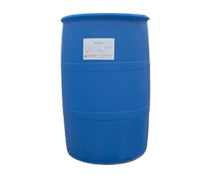Oxygen increasing principle of surfactant: after adding surfactant in aquaculture water, the saturation solubility of oxygen in aquaculture water can be increased. According to the hydrate formation theory and the double membrane theory, since the solubility of oxygen in water is very small, the water oxygen compound in water generally first forms at the gas-liquid interface, and then slowly diffuses from the gas phase to the liquid phase. In the water body containing surfactant, due to the solubilization of the surfactant, a large amount of oxygen is dissolved in the surfactant micelle formed in the aqueous solution. In this way, the formation of water oxygenates in the surfactant aqueous solution can occur not only at the gas-liquid interface, but also in the water body, reducing the formation time of water oxygenates and improving the solubility of oxygen in the water body.

The polymer flocculants widely used in China are mainly the products of polyacrylamide series. Polyacrylamide is a linear water-soluble copolymer. The cationic polyacrylamide prepared after modification is a solid powder, which is easily soluble in water and has strong moisture absorption and flocculation effects. It is a linear polymer surfactant with positive charge and can effectively flocculate suspended organic colloid and organic compound.
The flocculation mechanism is as follows: the long chain polymer and the surface of solid particles in sewage (generally negatively charged, such as clay) are adsorbed at multiple points; The polymer chain is very long, which can be adsorbed on several solid particles at the same time to bridge them together; Long chain molecules that have adsorbed several solid particles can also be bridged with each other by jointly adsorbing solid particles or intertwining with each other to form flocculent agglomerates (or particles).
The traditional oxygenators are usually peroxides such as sodium percarbonate, calcium peroxide and percarbamide, which have the disadvantages of low oxygen release and short action time. The research of aquatic drug researchers has shown that some surfactants have good oxygenation effect. For example, the use of dicotyledonous betaine can inhibit the overgrowth of anaerobic microorganisms in water, rapidly reduce the interfacial tension between water and air, so that a large amount of oxygen in the air can be introduced into the water, and the dissolved oxygen level can reach a high level of 4~5.5 mg/l from a low dissolved oxygen level of 1 mg/l.